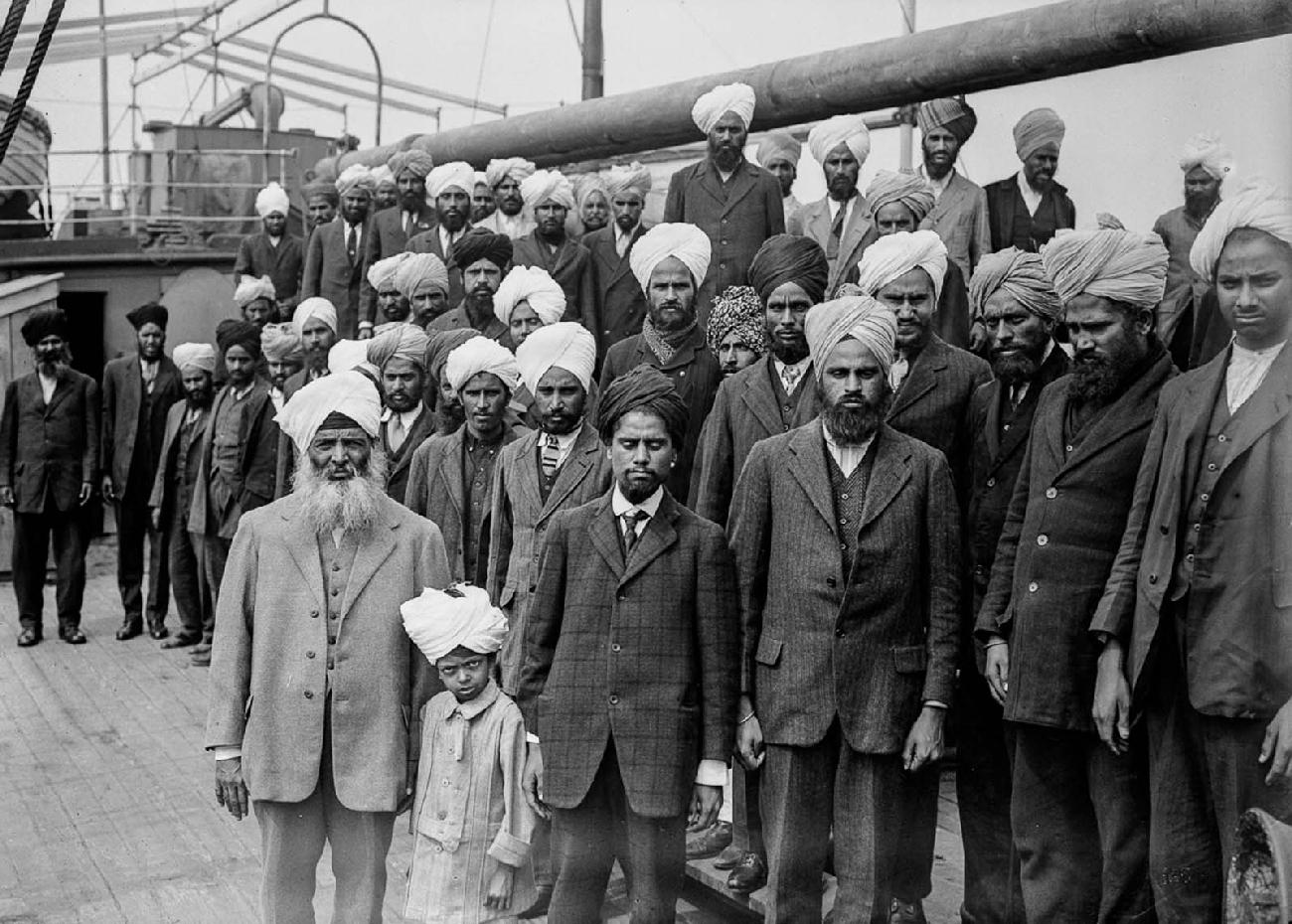
Figure 1.--This is immigration organizer Gurdit Singh Sandhu (front left) and other passengers aboard the chartered Japanese ship 'Komagata Matu' being held in Vancouver harbotr. We are not sure who the boy is, but probably was Sandu's son. |

|
The Canadian population was almost entirely white European and a small Native American population. Asians began arriving (late-19th century). The first arricals were Chinese, related to the American California Gold rush. They came in realatively small numbers and the Canadian Giovernment had a legal right to exclude them. Indians also began arriving (early-1900s). And as members of the British Empire had a legal right to enter other Empire countries, includung Canada. The Canadian Government at the time did not have a legal right to excludde them. This mostly occurred in Canada's Pacific coast province--British Colombia. This was an economic migration. The Indians wanted to improve their circumstamce beyomd what was possible in India at the time. These immigrants were almost entirely young men, in some cases married men. They found jobs in agriculture, fishing, and forestry. Their plans were both to earn a nestegg and return to India or to settle in Canada and then bring their families over when they had sufficient funds to support them. There were jobs for these men. Employers in the resource industries were anxious to find hard-working, cheap labor. The general public and the labor unions did not want these workers in Canada, both racial and labor competition issues were involved. The Asiatic Exclusion League was organized in Vancouver (1907). There were some attacks on Indian workers. The Government reacted with two Orders in Council which effectively stopped Indian immigration (1908). One Gurdit Singh, an Indian businessman, decided to challenge the Canadian Orders-in-Council. He chartered the Komagata Maru, a Japanese ship, and sailed from Hong Kong to Vancouver with 375 Indians, mostly Sikhs (1914). The ship arrived in Vancouver (May 23, 1914). Immigration officials refused the Indians entry and they were essenyially prisoners on the ship for 2 months. Lawyers, politicians, and immigration officials argued the the case. The ship was forced to return to India. All of this was closely followed in India, adding to the ferment for Indian independence. There was violence when the ship reached India. They were met by British police. The British tried to send them directly to the Punjab, where the Sikhs were concentrated. A riot ensued. Some 20 Indians were killed and more injured. The police arrested hundreds. Canada would not grant Indo-Canadaians the right to vote until (1947). Tht was the same vyear that India achieved indeoendence. The Indian government created a memorial to the Komagata Maru 'martyrs' near the Budge Budge (1952). Canada made fundamental changes to its immigration policy (1967). And Indian immigrants again became coming to Canada. The Legislative Assembly of British Columbia unanimously passed a resolution declaring 'that this Legislature apologizes for the events of May 23, 1914, when 376 passengers of the Komagata Maru, stationed off Vancouver harbour, were denied entry by Canada. The House deeply regrets that the passengers, who sought refuge in our country and our province, were turned away without benefit of the fair and impartial treatment befitting a society where people of all cultures are welcomed and accepted." (May 23, 2008).
Visit HBC Canadian Pages:
[Return to the Main Canadian page]
[Canadian choirs]
[Canadian Scouts]
[Canadian long stockings]
[Canadian First Communions]
Navigate the Boys' Historical Clothing Web Site:
[Return to the Main Canadian immigration page]
[Introduction]
[Activities]
[Biographies]
[Chronology]
[Clothing styles]
[Countries]
[Bibliographies]
[Contributions]
[FAQ]
[Glossaries][Images]
[Links]
[Registration]
[Tools]
[Boys' Clothing Home]
